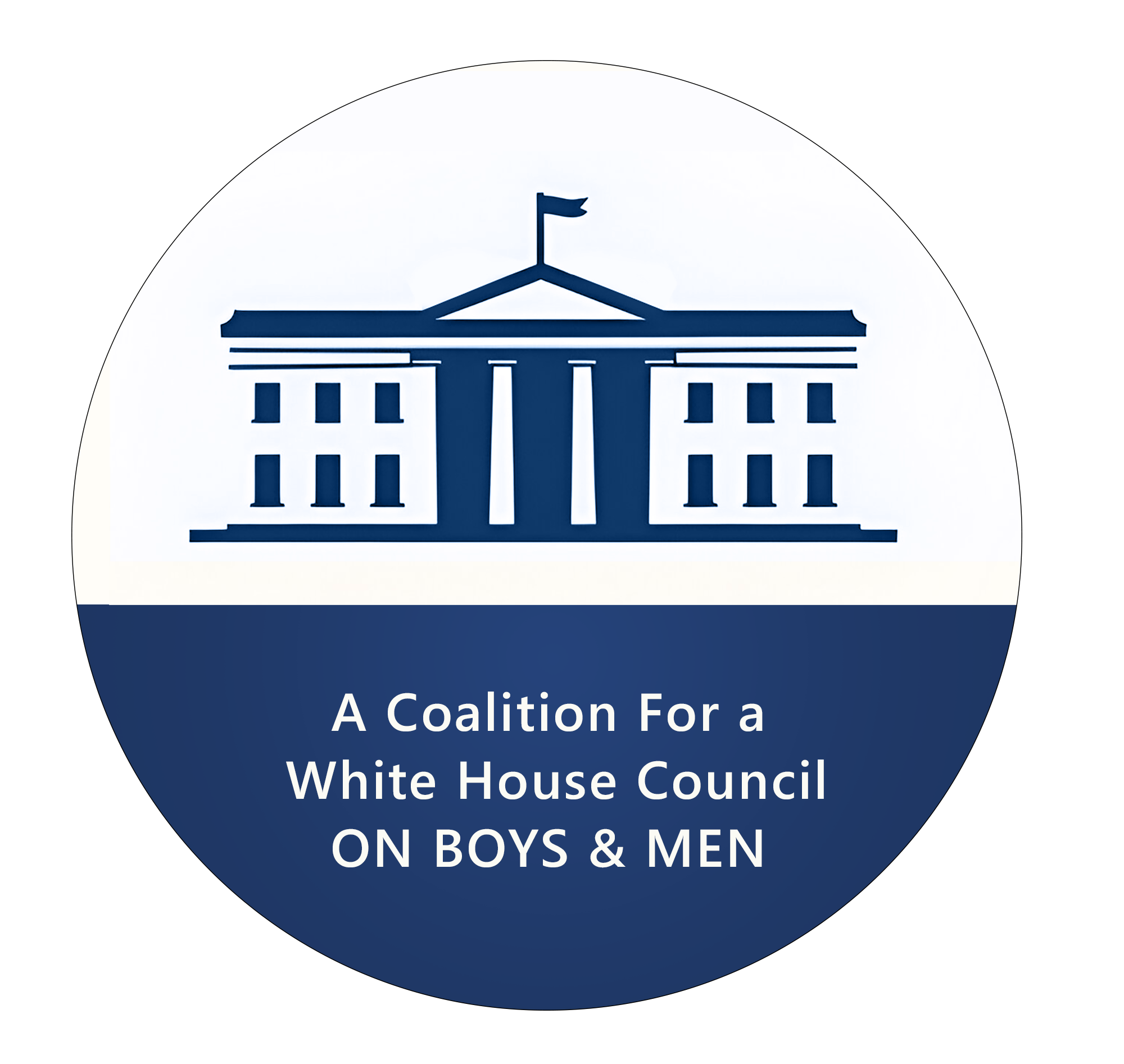About
Proposal for a White House Council on Boys and Men
Welcome.
The proposal for a White House Council on Boys and Men was originally inspired by a discussion initiated by the White House Boards and Commissions Director Joanna Martin to Dr. Warren Farrell, inquiring of his interest in advising the White House Council on Women and Girls, given his background with the National Organization for Women. Shortly after, Dr. Farrell created a multi-partisan Commission of thirty-four prominent authors, educators, researchers and practitioners to accomplish three goals: investigate the status of boys and their journey into manhood; identify both surface and underlying problems confronting boys and men; create a blueprint toward solutions. This proposal is the result.
Below you will find a basic outline of the site’s content and related information. Links to the proposal can always be found on the right sidebar.
__________________
Who and What. A multi-partisan Commission of thirty-four nationally-known scholars and practitioners request that President Obama create a White House Council on Boys to Men.
Why. A nationwide crisis of boys and men already exists. The Commission identifies five components:
- Education. Boys are behind girls in almost every subject, especially reading and writing. Yet boy-friendly programs (e.g., recess and vocational education) are being curtailed.
- Jobs. Our sons are not being prepared for jobs where the jobs will be. Yet women rarely marry men in unemployment lines.
- Fatherlessness. A third of boys are raised in father-absent homes; yet boys and girls with significant father involvement do better in more than 25 areas.
- Physical health. Life expectancy has gone from one to five years less for males than for females, yet federal offices of boys and men’s health are non-existent.
- Emotional health. Boys’ suicide rate goes from equal to girls to five times girls’ between ages 13 and 20, as boys feel the pressures of the male role.
Each of the five crisis components is potentially handled by a different department of the government; therefore coordination and prioritization is best handled at the White House level.
Short-Term Investment. One million dollars.
Long-Term Savings. Many billions of dollars. (For example, boys who are cared for become men who care for–men who pay taxes for schools rather than drain taxes for prisons.)
Quality-of-Life Savings. Priceless.
Timing. The mere presidential announcement of a White House Council on Boys to Men makes visible an invisible crisis. A White House Conference on Boys to Men to present “best practices” within one year after the Council is created.
The Boy Crisis: Why Our Boys Are Struggling and What We Can Do About It.
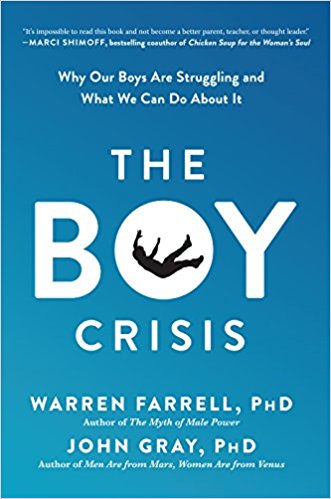

WHAT IS THE BOY CRISIS?
It’s a crisis of education. Worldwide, boys are 50 percent less likely than girls to meet basic proficiency in reading, math, and science.
It’s a crisis of mental health. ADHD is on the rise. And as boys become young men, their suicide rates go from equal to girls to six times that of young women.
It’s a crisis of fathering. Boys are growing up with less-involved fathers and are more likely to drop out of school, drink, do drugs, become delinquent, and end up in prison.
It’s a crisis of purpose. Boys’ old sense of purpose—being a warrior, a leader, or a sole breadwinner—is fading. Many bright boys are experiencing a “purpose void,” feeling alienated, withdrawn, and addicted to immediate gratification.
So, what is The Boy Crisis? A comprehensive blueprint for what parents, teachers, and policymakers can do to help our sons become happier, healthier men and fathers and leaders worthy of our respect.
Of Boys and Men: Why the Modern Male Is Struggling, Why It Matters, and What to Do about It
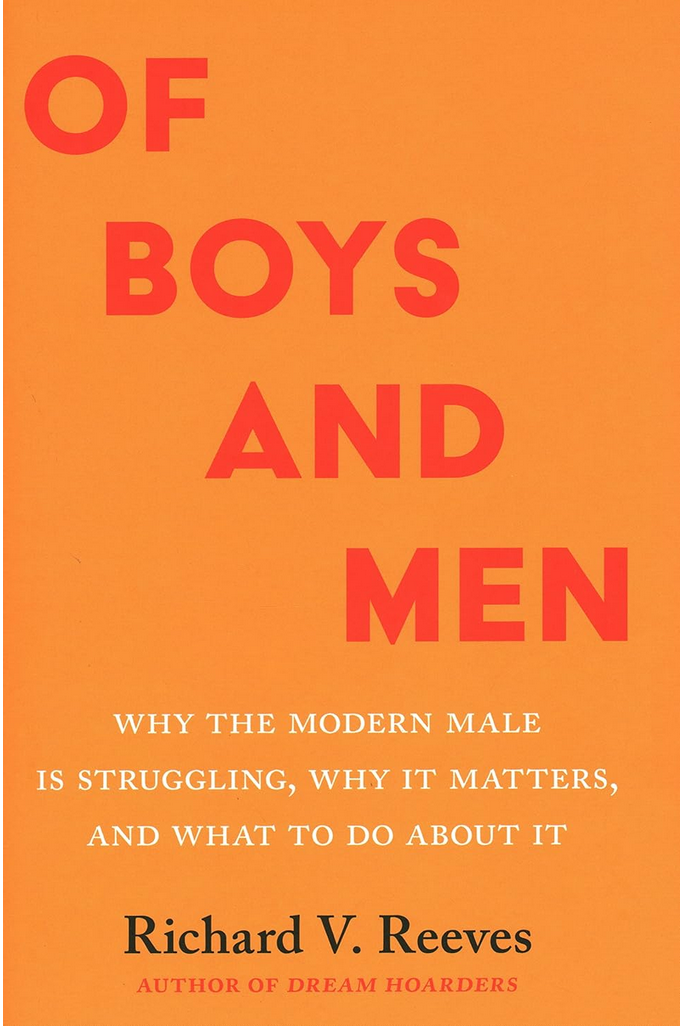

The Book that Sparked a National Conversation
A Barack Obama 2024 Summer Reading Selection
An Economist Best Book of 2022
A New Yorker Best Book of 2022
Boys and men are struggling. Profound economic and social changes of recent decades have many losing ground in the classroom, the workplace, and in the family. While the lives of women have changed, the lives of many men have remained the same or even worsened.
In this widely praised book, Richard Reeves, father of three sons, a journalist, and now the president of the American Institute for Boys and Men, tackles the complex and urgent crisis of boyhood and manhood. He argues that our attitudes, our institutions, and our laws have failed to keep up. Conservative and progressive politicians, mired in their own ideological warfare, fail to provide thoughtful solutions.
Reeves looks at the structural challenges that face boys and men and offers fresh and innovative solutions that turn the page on the corrosive narrative that plagues this issue. Of Boys and Men argues that helping the other half of society does not mean giving up on the ideal of gender equality.
How Democrats Can Win Back Men: Why Understanding Male Voters and Their Issues is Vital for Democratic Victory
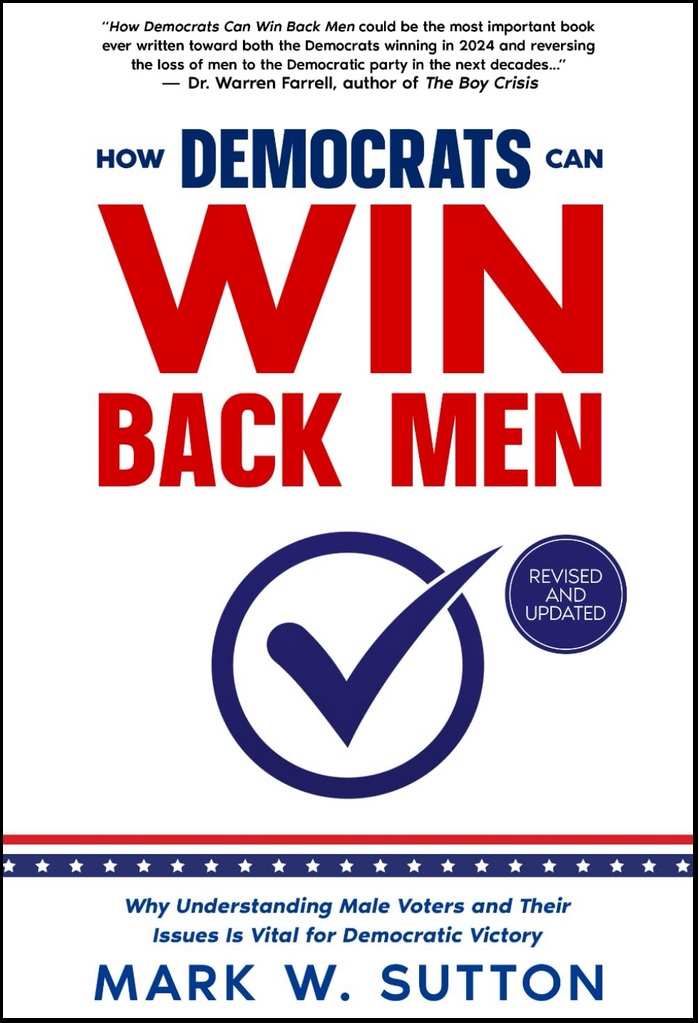
"How Democrats Can Win Back Men could be the most important book ever written toward both the re-election of Democrats in 2024 and reversing the loss of men to the Democratic party in the next decades if campaign leaders implement its advice..." -- Dr. Warren Farrell, author of The Boy Crisis
Democrats have been losing men -- it's time to win them back! A registered Democrat for 35 years, debut author Mark W. Sutton examines voting patterns, Democratic strategy, and policy decisions revealing the urgent need for the party to better appeal to male voters in 2024 and in the coming decades.
The margins of victory, particularly in key swing states, have been razor-thin in the last two presidential elections. If Democrats can sway just a small percentage of male voters, they greatly improve their chances of taking both the White House and Congress. Sutton shows how Democrats can reframe messaging and adjust strategic and policy decisions to increase their odds of winning in 2024 and beyond.
The War Against Boys: How Misguided Policies are Harming Our Young Men
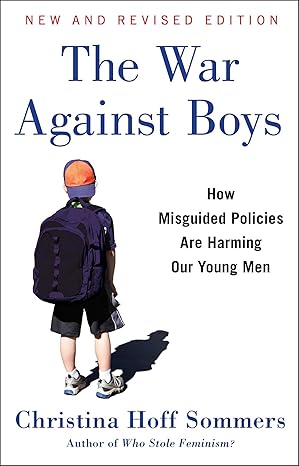
2015 - An updated and revised edition of the controversial classic — now more relevant than ever—argues that boys are the ones languishing socially and academically, resulting in staggering social and economic costs.
Girls and women were once second-class citizens in the nation’s schools. Americans responded with concerted efforts to give girls and women the attention and assistance that was long overdue. Now, after two major waves of feminism and decades of policy reform, women have made massive strides in education. Today they outperform men in nearly every measure of social, academic, and vocational well-being.
Christina Hoff Sommers contends that it’s time to take a hard look at present-day realities and recognize that boys need help. Called “provocative and controversial...impassioned and articulate” (The Christian Science Monitor), this edition of The War Against Boys offers a new preface and six radically revised chapters, plus updates on the current status of boys throughout the book.
